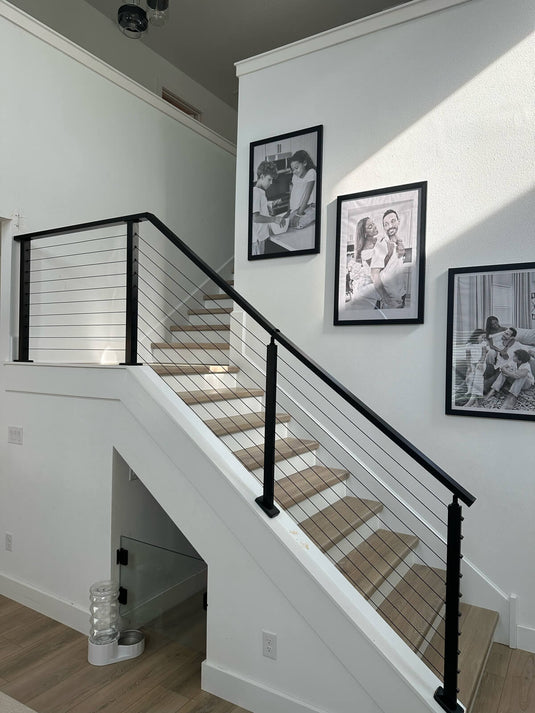TABLE OF CONTENTS
Few tips to know before starting a new cable railing project
Cable railings are becoming an increasingly popular choice for homeowners looking to modernize their outdoor and indoor spaces. The minimalist design of horizontal cable infill allows for unobstructed views of the surrounding landscape. Those in urban settings choose cable railings to lend a contemporary elegance to their exterior design, making it an ideal option even for small decks. Regardless of your location or the style of your project, cable railings offer advantages that align with modern design sensibilities. To get the most out of this trend, keep these tips in mind when installing cable railings to maximize aesthetics and functionality.

1. Be aware of cable railing regulations
The International Building Code (IBC) and the International Residential Code (IRC) contain standards for installing horizontal cable railings. The IBC and IRC require that guardrails be at least 42 inches in height when located on the commercial landings, and at least 36 inches in height when located on the residential area such as decks or balconies. Handrails must also be provided on both sides of stairs, with a minimum height of 34 inches and a maximum height of 38 inches. Most states have adopted these guidelines. However, regulations can vary locally, so it's important to check with municipal authorities to determine the specifications for each project.

2. Choosing materials for the railing posts
The type of deck railing posts you install comes down to personal preference and the look you wish to achieve. For a wood deck railing, 4" x 4" end posts are recommended. If opting for an aluminum or stainless steel railing system, 2" x 2" stainless steel post or 3" x 3" aluminum posts are suggested. Our products are designed to be compatible with various post sizes and materials. Ultimately, it is your choice based on the style and aesthetics you desire. You have flexibility to select posts that coordinate well with the overall deck design.
Read more : How to Choose the Handrail for Your Staircase?

3. Selecting the fittings and hardware
Numerous tensioners and fittings for cable railings exist on the market, but high-quality stainless steel hardware is essential for durability. For wood posts, we recommend lag screw CK17, and for metal posts, hand swage tensioner CB40 - both utilizing marine grade 316 stainless steel to ensure maximum corrosion resistance and longevity.
At Muzata, our hardware sets feature marine-grade materials chosen for contemporary aesthetics and unparalleled sturdiness in outdoor conditions. While all our hardware maintains superior quality, the sets differ in design and installation techniques intended for either straight cable runs or staircases. When selecting hardware, prioritize marine-grade stainless steel that will withstand the elements. Also consider the cable path and intended setting to choose the right system design and installation method.

4. Installation of cable railing
With your wood or metal railing framework built and cable and hardware prepared, you're ready to begin installation by drilling post holes – potentially the most time-consuming step. If using Muzata's posts, pre-drilling and painting will be completed in advance. Next, mount all turnbuckles and end post fittings based on the hardware instructions. Our installation video and WikiHow guidelines provides detailed steps tailored to your system’s components.




